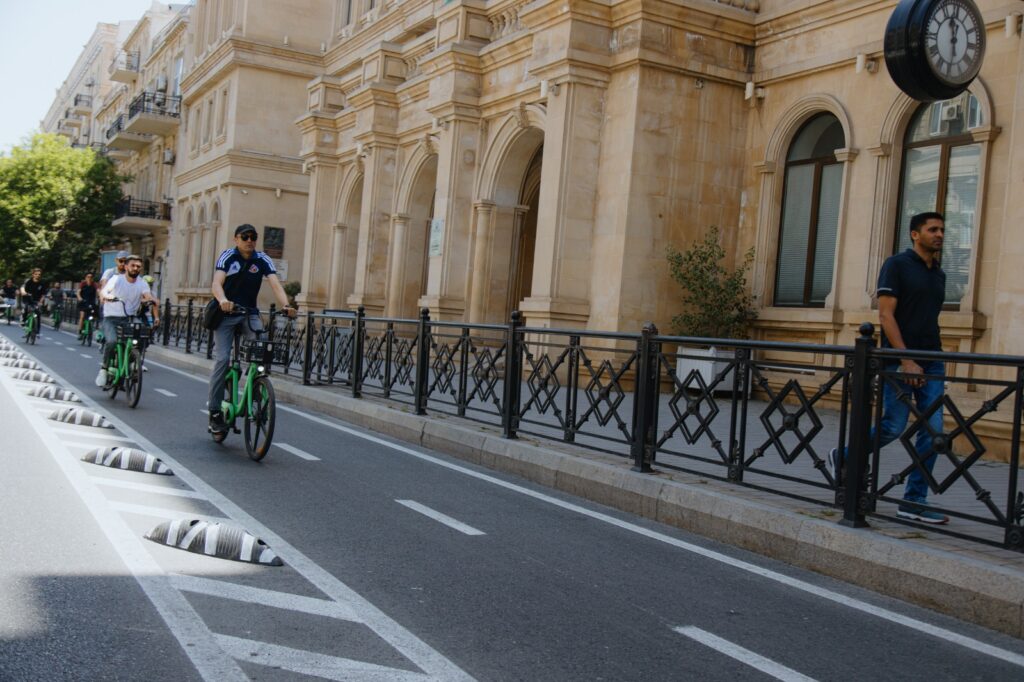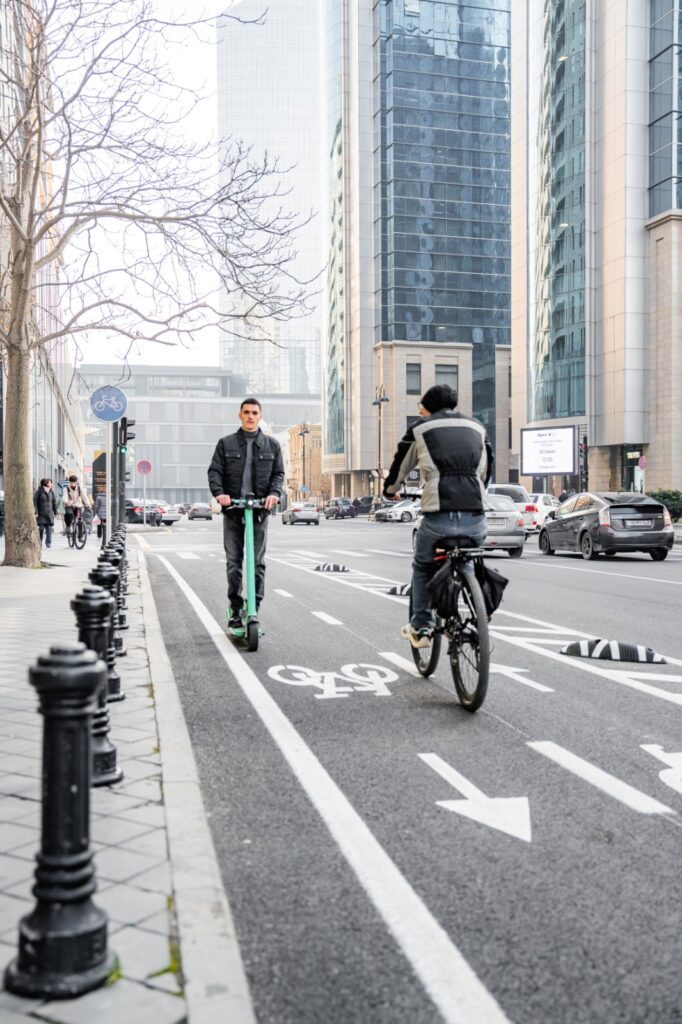Bicycles and scooters have become a regular feature of modern Baku, as the city actively works to develop a convenient, sustainable transportation system. The capital of Azerbaijan is steadily building a comprehensive network of micromobility lanes, a central goal in its urban mobility transformation program. This initiative not only aims to boost public transport efficiency and reduce traffic congestion but also improve the environment and promote healthier lifestyles by encouraging cycling and e-scooter use for short trips.
The expansion of bike and scooter lanes is a cornerstone of this strategy. Unlike in the past, when users complained about the lack of infrastructure, Baku is now seeing a steady increase in micromobility users thanks to new, purpose-built lanes. The development includes road signs, markings, safety barriers, and traffic light sections specifically for bicycles, making micromobility safer and more accessible.
These efforts contribute significantly to enhancing urban life, reducing car usage, especially downtown, easing congestion, and lowering pollution. Visually, the city is evolving to resemble modern European capitals, and Baku’s commitment to sustainable transport is evident in its ambitious goal to build 100 km of micromobility lanes, including in surrounding districts to expand route connectivity.

So far, 53 bicycle traffic light sections have been installed at 24 intersections, and thousands of safety barriers are being placed along bike lanes. A major step came in August 2024 with the launch of Baku’s first bike-sharing system, including electric bikes. This allows users to rent and return bikes at convenient locations. Parking infrastructure has expanded accordingly, with 484 dedicated micromobility parking stations now available, mainly near metro stations, bus stops, schools, malls, and popular areas like the boulevard. These locations are marked with QR codes linked to a mobile rental app.
The system has seen significant uptake. From September 2024 to April 2025, over 1.5 million trips were made using shared micromobility, covering more than 4.1 million kilometers. Including private users, the total figures are even higher.

Various events promote micromobility awareness. On May 28, a cycling event marked Independence Day, while on June 1, another was held for World Bicycle Day, organized by ALTA (Azerbaijan Land Transport Agency), the Cycling Federation, and APAR(bicycle rental company). In May, the UN and local organizations held safety campaigns during the 8th Global Road Safety Week, focusing on high-traffic areas like Huseyn Javid Avenue near the Elmler Akademiyasi metro station, where new bike lanes were recently added.
A key concern for drivers has been addressed: most new bike lanes do not reduce the number of car lanes but rather optimize their width to European standards (3.0–3.25 meters), making road use more efficient. This principle of “channelization” improves safety, stabilizes traffic flow, and reduces accidents.
Given that 1.3 million people die annually in traffic accidents, many involving cyclists and pedestrians, enhancing micromobility safety is critical. While bringing many benefits, including improved public health and urban quality-micromobility also requires new infrastructure integration and shifts in commuter habits.
Baku continues to invest in infrastructure and public awareness, showing its dedication to building a modern, sustainable urban transport system where micromobility plays a growing and vital role.
